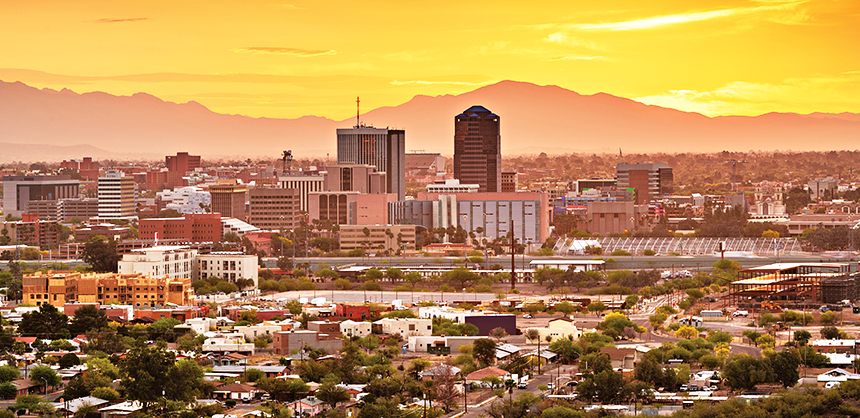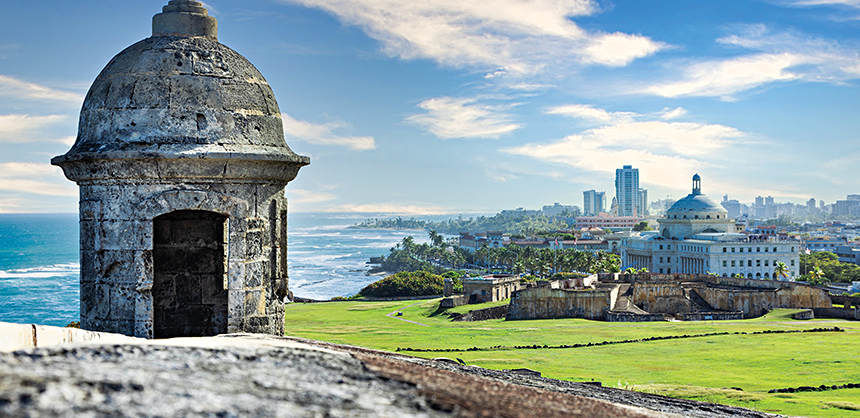CVBs And DMOs Adjust Quickly To Ensure They Emerge Stronger Than EverNovember 30, 2020
By David SwansonCVBs And DMOs Adjust Quickly To Ensure They Emerge Stronger Than Ever

Visit Raleigh
To the casual observer, the meetings and convention industry appears to be at a standstill. Since the start of the COVID-19 pandemic earlier this year, associations across the country have cancelled or postponed one gathering after another. Convention facilities are mostly empty, conference-oriented hotels are closed or struggling.
But, look deeper and one sees how the industry is getting into position for its rebound. While the pivot — to use 2020’s most exhausted term — has been a heavy lift for DMOs and CVBs across the board, the impact has been more acute for some destinations than others. Where has the pandemic been felt most intensely and why? What tools are destinations using to see their organization to the other side?
Hit Hard by the Pandemic
In this report, destination leaders at cities large and small offered a sense of how each is making its way through 2020 and is preparing for next year. As the pandemic took hold during the spring and budgets were reviewed, one of the first orders of business was staff cuts — usually some combination of layoffs, furloughs and early retirements.
At the Greater Miami Convention & Visitors Bureau, the initial cutbacks started in the spring, according to Rolando Aedo, COO of the organization. “Our hotels shut down entirely in April,” Aedo says. “Those first 90 days were pretty devastating. We had significant pay reductions up to 25%, we suspended benefits and incentives, and there were some contractors we let go. We had a plan to get us through the fiscal year, but as the year progressed and things did not improve as quickly as we’d hoped, we made more cuts in October. We’re still finalizing some of the restructuring, but our payroll costs will be down more than 40%.”
Visitors to Pima County, Arizona, home to Tucson, spent $2.6 billion last year, generating $81 million in local tax revenue for the city, according to Brent DeRaad, president and CEO of Visit Tucson. October through April is the destination’s high season for meetings, but most have cancelled or postponed this year. In response to the pandemic, the organization downsized from a staff of 43 down to 31. “The cuts were across the board, but we kept our meeting sales team entirely intact,” DeRaad explains. “We saw there was a need to re-book meetings, and we’re counting on that to continue in future years.”
In El Paso, the cuts were more dramatic. “We furloughed in early April, and we hoped that it would slow the hemorrhage a bit,” says Brooke Underwood, assistant general manager of Visit El Paso. “But we ended up laying off 75% of our staff. There are just six of us remaining, and we’re wearing different hats. To be honest, I don’t see us bringing staff back in 2020, but hopefully, by the beginning of 2021.”
But the news was not bad across the board. Visit Indy was able to get by with only a 20% staff reduction, some of which was through volunteer retirements. The difference lies, in part, in how destination organizations are funded. Underwood notes that parent organization Destination El Paso is 100% funded by hotel occupancy taxes, and with occupancy below 20% in the early days of the pandemic, revenue shortfall was acute. In contrast, Visit Indy is funded by taxes from hotel, F&B, car rentals and more. “Our tax base is more like a mutual portfolio,” explains Leonard Hoops, president and CEO of Visit Indy. “It’s difficult any time you lose hotel taxes, but we’re a little more diversified.”
Jack Johnson, chief advocacy officer with Destinations International, says a range of funding sources is essential to survivability. “We’ve seized this opportunity to remind everyone that a business model that relies exclusively on hotel revenue can be wiped out completely,” he adds. “Destinations that do that tend to focus on occupancy and RevPAR, rather than the community and trying to get a broader group to your destination. But I’m fearful that given how short of funds the governments are right now, these funds are going to be diverted for some destinations.”
Revenue shortfalls can be even more critical at smaller CVBs. Julie Roller Weeks, director of the Abilene Convention & Visitors Bureau (Visit Abilene Kansas), says that, following a $9 million expansion at the Dwight D. Eisenhower Presidential Library and Museum, the Kansas town — population 6,300 — anticipated double the visitors. This year was projected to be the destination’s best in “a very long time.” “In contrast, it is Abilene’s tourism industry’s worst year,” says Weeks, who notes that the museum has been closed since March. The CVB has gone from two full-time and three part-time positions to one full-time, and closed its travel information center. “It does not make sense to pay staff to keep it open when our largest attraction is closed.”
Dunwoody, a small city north of Atlanta, furloughed staff initially, but was able to bring them back to work remotely. More than 60% of the city’s visitors last year were business travelers, according to Steven Schumacher, interim executive director and director of sales for the city’s CVB, Discover Dunwoody. “We have an extremely talented team,” explains Schumacher, who adds that the CVB worked to keep costs low by bringing functions in-house where possible. “We encouraged each other to bring all our skillsets to the table to succeed despite the unprecedented challenges we are facing. It’s been incredibly inspiring to see the creativity and flexibility.”

Tucson, Arizona, USA downtown city skyline with mountains at twilight.
New Funding Sources Helped
Other destinations have bridged the lean months by securing funding from outside sources. In October, the Greater Raleigh Convention and Visitors Bureau (Visit Raleigh) reported that lost tax revenue had topped $15 million, and that total economic impact from cancelled meetings, conventions and sporting events was more than $135 million. But the CVB was awarded $1.25 million in CARES Act funds by Wake County for the purpose of driving recovery efforts.
The funds, which must be utilized this year, are supporting a comprehensive tourism recovery campaign that includes marketing, advertising, public relations, sales efforts focused on meetings, conventions and sporting events, and enhanced visitor information services.
In addition to the paid “Wish You Were Here” ad campaign, Visit Raleigh’s sales team is holding a meeting professionals summit where, over the course of three virtual events, they will share best practices with meeting planners on A/V needs for virtual meetings, planning hybrid meetings, virtual fundraising, GBAC certification and more. “With hotels, attractions, restaurants and bars all open again in some capacity and consumer confidence growing, now is the perfect time for us to launch a tourism recovery campaign,” says Dennis Edwards, president and CEO of the Greater Raleigh Convention and Visitors Bureau (Visit Raleigh). “Our message is that Raleigh, N.C. is not only re-opened, but safely welcoming visitors once again.”
In some cases, funding may be small, but it can still lead to tangible results if carefully targeted. The state of Rhode Island allocated funds for a “Take it Outside” program, to encourage outdoor activities, says Kristen Adamo, president of the Providence Warwick Convention & Visitors Bureau. The CVB used the money to distribute 120 heat lamps to restaurants and other businesses. Adds Adamo: “We are also in the process of building an Event Lending Library, so that organizations that would like to host an event outdoors this winter will be able to borrow the supplies that they need and return them when they are done.”
Visit Indy was able to fill some hotel rooms by going back to its roots with sports. During the summer, the destination hosted 18 events drawing 40,000 attendees. Hoops notes that Indianapolis’ location is an asset. “Event organizers tell us that they are worried about getting on a plane. But we’re within an eight-hour drive for 50% of the U.S. population.” Hoops says Indiana allowed Visit Indy to host events of up to 250 people starting in July, as long as they submitted a plan. But a sticking point for many destinations is that reopening guidelines have been slow in coming.
In Tucson, DeRaad says Arizona has relied on counties and municipalities to develop guidelines. “We saw a real desire to have a little bit more direct control,” he adds. “The guidance put out by Pima County specifically for public events has been very helpful. For a gathering of more than 50 people, they apply through the county.”
While some states have left the decisions up to cities and counties, others have taken a stricter approach. In Illinois, gatherings of 50 people or more are not allowed until the state reaches the fifth stage of reopening, which won’t come until a vaccine or highly effective treatment becomes widely available. In California, the state has yet to issue guidelines for when meetings and conventions of any size can begin, in any county. Junior Tauvaa, chief sales officer for Visit Anaheim, says his destination has been working with the California Convention Center Coalition, Visit California, California Travel Association, local unions and other DMOs to provide recommended guidelines to reopen the state’s convention centers and meeting and convention business safely. Explains Tauvaa: “Unfortunately, the state of California has not provided the guidelines for Anaheim and all California destinations to reopen,” he says. “Currently, key business sectors, including theme parks, are unable to open until Orange County reaches tier four of the state’s reopening guidelines. Another sector critical to the economic vitality of the region is meetings and events, for which the State of California has also failed to provide detailed guidelines for reopening.”
Julie Coker, president and CEO of the San Diego Tourism Authority, says San Diego County — the nation’s fifth most populous — has been excellent to work with, but the state has not issued guidance as quickly as the organization would like. Although California has been one of the most cautious states about reopening, San Diego has been fortunate: The destination has consistently achieved one of the lowest per-capita coronavirus case rates for all large cities.
The San Diego Convention Center and hotels have produced their recommended guidelines for reopening, which the county has encouraged and shared with the state, but to no avail. “We’ve got to push the state to open for small meetings,” Coker says. “I think we can do it safely. They’re controlled gatherings — we know who all the attendees are and we can communicate with them directly before they arrive. We’re keeping our foot on the gas pedal with that.”

Discover Puerto Rico
Seeking Local Attendees
All of the uncertainty is inspiring destinations to reprioritize their mission, and the initial messaging for San Diego visitors was “We’ll keep San Diego warm for you.” “As a DMO, you don’t usually market to the locals, but given where the pandemic was, we had to pivot,” Coker says. “So we had a campaign for locals, ‘Stay Diego’ — don’t cancel your vacation, rediscover San Diego. Then came ‘Dine Diego’ and ‘Shop Diego’, and then we started marketing to the regional drive market, Southern California, Phoenix and Tucson. The other thing we’ve pivoted to is, we’ve leaned into our customers and helped them rebook,” Coker adds. “Our sales managers have wrapped their arms around our customers to help them get through this period of time.”
Johnson says that getting states to recognize that a convention is different from a trade show and is different from a business meeting has been a challenge. “We’re not arguing for conventions and trade shows to start up, but business meetings are possible in many places,” he explains. Local regulations aside, Johnson suggests there are two standout characteristics for DMOs and CVBs that appear to be making it through the turmoil. “One is those destinations that have started to reposition themselves to see their residents as the primary customer,” Johnson explains. “At the end of the day, destinations are going to need to be seen as a critical part of the community. Those that were already doing that or were able to pivot quickly are going to come out OK.” Then there are the destinations that are better positioned financially. “This is particularly true for areas that are used to disaster,” Johnson notes. “For instance, in the South, folks there are used to hurricanes. So many governments don’t like having funds in reserve, but those who have reserves have been well positioned.”
For Puerto Rico, being hardened by disaster is not just financial reset, it’s also a mindset. “In 2016, we had the Zika virus,” explains Brad Dean, CEO of Discover Puerto Rico, who was the first hire for the DMO when it was formed in summer 2018. “We had hurricanes Irma and Maria in 2017, then a series of earthquakes on the Southwest coast. These events forced us, as a new organization, to create our crisis response plan very early on. We have nurtured a regular, unwavering focus on preparedness — from planning to marketing to communications.”
For many destinations, adjusting to hybrid meetings for the foreseeable future has been the focus. In October, the Greater Miami CVB hosted its Annual Meeting, the organization’s first major gathering since the start of the pandemic. “It was an opportunity to showcase our hybrid model, to unveil the technology that will help us get to the new normal,” Aedo says. “We made accommodations for people to view the meeting virtually.” The meeting typically draws up to 600 attendees, but the hybrid event wound up drawing even more: 200 in-person attendees plus 498 virtual participants.
As much as such organizational pivots will help many destinations survive the pandemic, many communities have built-in advantages. DeRaad cites two for his community. “With Tucson being 60 miles from the border, government travel has not diminished,” he explains. “But also, it comes back to the brand we’ve promoted for so long, emphasizing outdoor travel.” With indoor gatherings and recirculated air from HVAC systems commonly cited as leading causes for the spread of COVID, the availability of outdoor spaces where groups can convene will be a key advantage for many destinations, especially for those in the Sun Belt.
Stronger Together
As the struggle with the pandemic continues, a common term many leaders are using is “resilient.” “The residents of Puerto Rico have earned their PHDs in resiliency,” says Dean, who notes that tourism accounts for 80,000 jobs on the island. “The pandemic has presented unique challenges, but the team has risen to the occasion. They are relatively young, but they have been the greatest point of inspiration, demonstrating an entrepreneurial spirit through this.” Dean says Discover Puerto Rico has been promoting the island’s unique experiences through virtual vacations, highlighting cooking classes and yoga on the beach, and reached out to customers with care packages of locally grown coffee. “It’s always a good time to inspire people with travel,” Dean adds. “It was not so much a sales tool, but if you’re going to be locked away at home, why not connect with them through great coffee? I thought it was a novel idea the team came up with, but what surprised me was the conversations it created, it kept us in touch.”
“This is an incredibly difficult time,” DeRaad says. “But the resiliency of Tucson’s tourism industry has been a surprise. It stretches across the hotels and resorts, but also includes restaurants and attractions. I’m seeing people work together to generate whatever business they can. Tusconians have stepped up with some staycations and they’ve been great about supporting their restaurants.”
For Coker, who led the Philadelphia CVB until her move to San Diego in June, the city’s collaborative nature has been inspiring. “From the hotels, to the attractions, to the restaurants, everyone has been working closely together to ensure business can reopen safely,” she says, adding that the California DMOs are also very close, and work well together. “San Diegans have really stepped up and done what they were supposed to do — wearing masks, following physical distancing and the CDC guidelines. That message will get out to visitors and make them more comfortable.” She adds, “We don’t have all the answers. I’ve been through 9-11 and the credit crisis, but we’ve never experienced anything like this. We really just need to get that first meeting done.” | AC&F |








